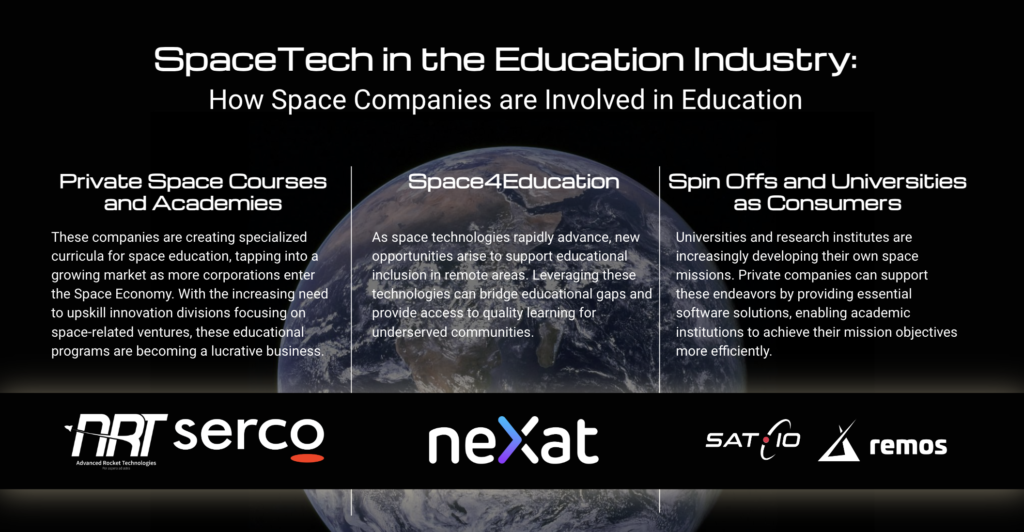
The intersection of space technology and education has opened up new opportunities for innovation, accessibility, and growth. As the Space Economy expands, so too does the need for specialized education and training, particularly for corporations, remote communities, and academic institutions. This article explores three distinct approaches to how space companies are supporting education: Private Space Courses and Academies, Space4Education initiatives, and Universities as Consumers.
1. Private Space Courses and Academies
The demand for specialized space education is growing as more corporations enter the Space Economy. Private Space Courses and Academies have emerged as a crucial part of this expanding market, offering tailored curricula to upskill innovation divisions and professionals involved in space-related ventures.
Case Study: Serco Space Academy. Serco’s Space Academy exemplifies how private companies can lead in space education. The academy provides a comprehensive set of operational training programs to customers, partners, and employees. Drawing on over 60 years of operational experience, the academy offers courses across a wide range of space sector disciplines, including Earth observation, satellite navigation, satellite communications, and space cybersecurity. Delivered by global space experts, these programs are designed to be flexible, catering to various levels of expertise from beginners to advanced professionals. The training is available both internationally and locally, depending on the availability of necessary infrastructure.
You can find more here.
Case Study: ART’s Astronautics Academy. Advanced Rocket Technologies has taken a similar approach with its Systems Approach to Autonomous Systems Design course. This online course focuses on two core concepts: the direct relationship between system design and its intended mission, and the structured thinking process required to achieve desired outcomes. The course is hands-on, blending informal discussions with formal education, and emphasizes the importance of mission-specific design in autonomous systems. This program illustrates how online education can effectively deliver specialized knowledge to those involved in the rapidly evolving field of space technology.
You can find more here.
2. Space4Education
Space technologies are playing an increasingly important role in bridging educational gaps, particularly in remote areas. By leveraging satellite communication and other space-based technologies, educational inclusion is becoming more accessible, allowing students in isolated regions to benefit from quality learning experiences.
Case Study: neXat ’s E-learning Solution. neXat has developed an innovative e-learning solution that addresses the challenges faced by rural schools in remote areas. These schools often struggle with limited access to educational resources and qualified teachers, making it difficult to provide effective learning experiences. neXat’s solution includes a satellite-based communication system that allows teachers to deliver lessons from any location with a stable internet connection. The system efficiently shares satellite bandwidth among multiple schools, ensuring cost-effective communication. Additionally, schools are equipped with Wi-Fi routers to access e-learning applications, and an optional hotspot service allows schools to offer internet access to the local community, promoting long-term sustainability. This approach demonstrates how space technology can be harnessed to enhance educational inclusion and overcome geographical barriers.
You can find more here.
3. Spin-offs and Universities as Consumers
Universities and research institutes are increasingly taking on the role of consumers in the Space Economy, developing their own space missions and requiring specialized software solutions to support these endeavors. Private companies are stepping in to provide the necessary tools, enabling academic institutions to achieve their mission objectives more efficiently.
Case Study: SAT.IO and the University of Stuttgart . The Institute of Space Systems at the University of Stuttgart offers a compelling example of how universities are becoming active participants in the space sector. In 2017, the institute launched its first satellite mission, “Flying Laptop,” which required extensive adaptation of traditional mission control software. Recognizing the limitations of their existing solutions, the team began developing a scalable, multi-mission operating system. This initiative led to the creation of SAT.IO, a startup focused on simplifying satellite missions through innovative mission management software. SAT.IO’s software was successfully implemented in the university’s second CubeSat mission, EIVE, launched in 2023. The system is designed to optimize and automate satellite operations, reducing operational risks and increasing efficiency, even with fewer personnel in the control room. This case study highlights how universities, as consumers, are driving innovation in space technology by partnering with private companies to develop cutting-edge solutions.
You can find more here.
Case Study: Remos Space Systems AB and the Rymdcampus in Kiruna, Sweden. The Rymdcampus at Kiruna, Sweden, faced a similar challenge with their CubeSat program. The existing ground station at the university relied on outdated hardware and software that could not support modern satellite missions. To address this, the university implemented the Expedite software modem. This all-in-one package includes a modem, tracking system, scheduler, sequencer, analytics, and diagnostics, providing the students with everything they need for Assembly, Integration, and Testing (AIT) and operations. The intuitive graphical user interface (GUI) made it easy for students to operate their satellite, while the advanced REST API enabled integration with their antenna system and mission control software. With this system in place, students at Rymdcampus are fully prepared for in-orbit operations once their CubeSat is launched.
You can find more here.
Conclusion
The integration of space technology into education is creating new opportunities for learning and innovation. Whether through specialized private courses, initiatives to support education in remote areas, or universities developing their own space missions, the collaboration between space companies and educational institutions is reshaping how knowledge is shared and applied in the Space Economy. As these partnerships continue to evolve, they will play a critical role in preparing the next generation of professionals and researchers for the challenges and opportunities of space exploration and development.



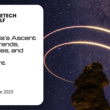
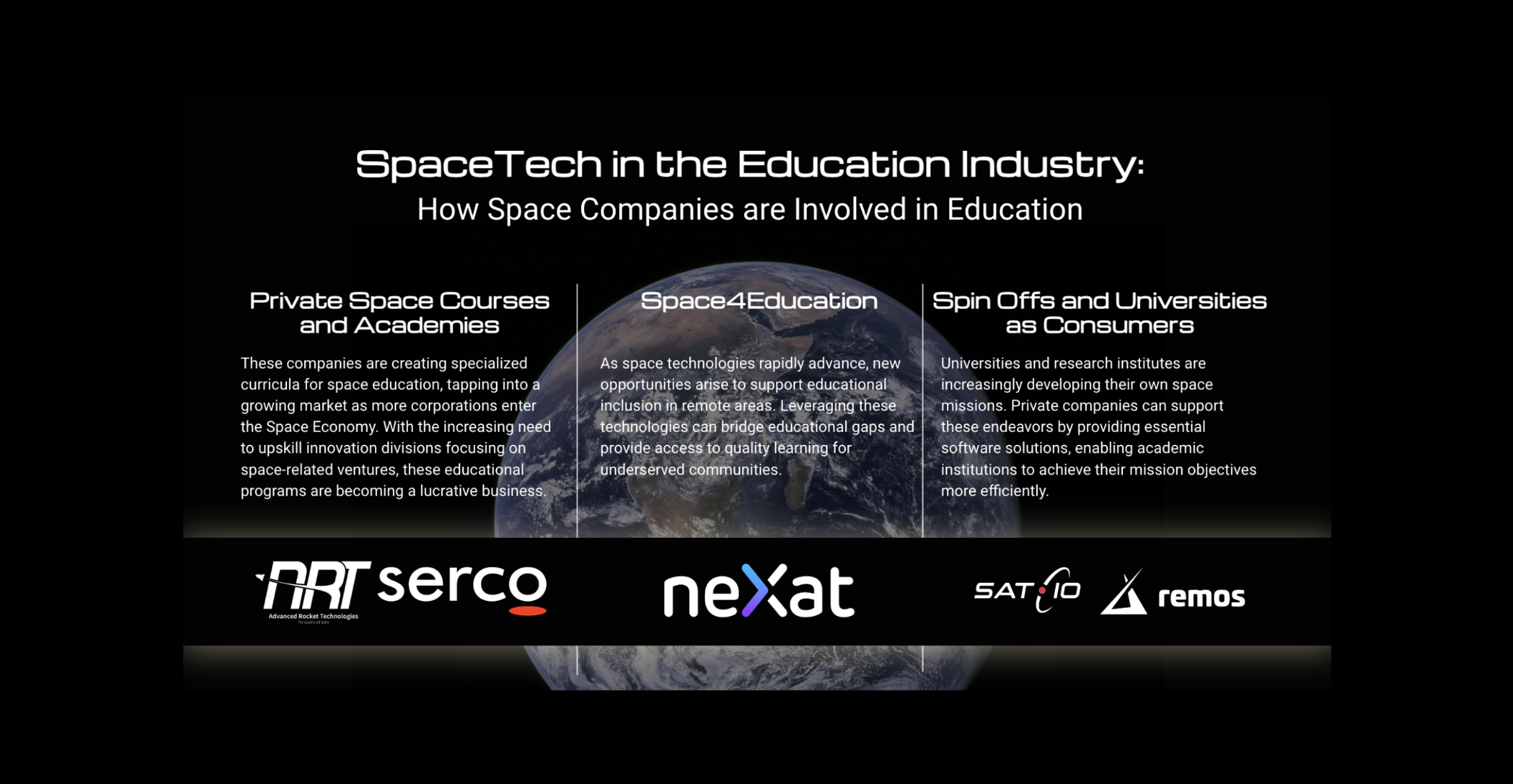
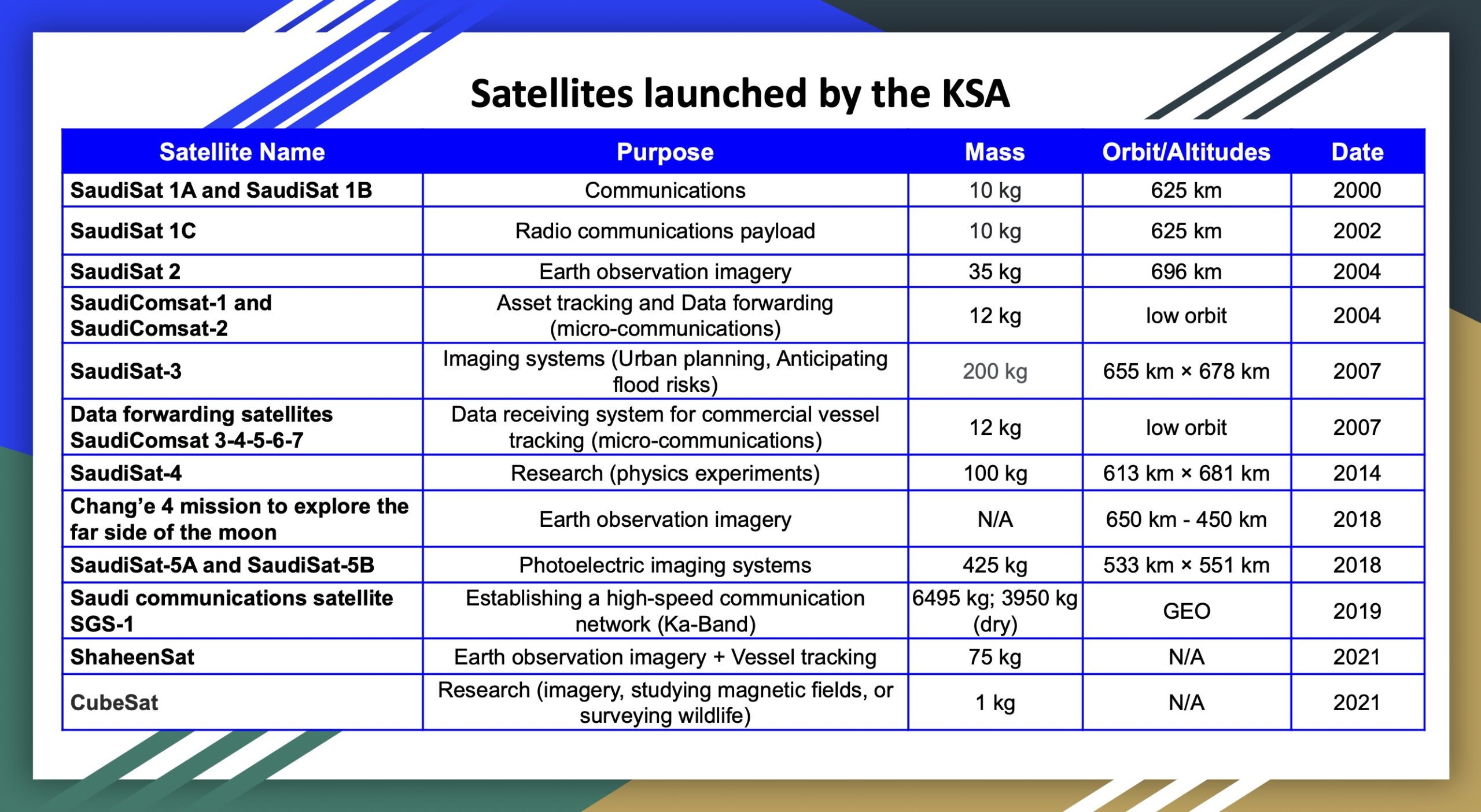
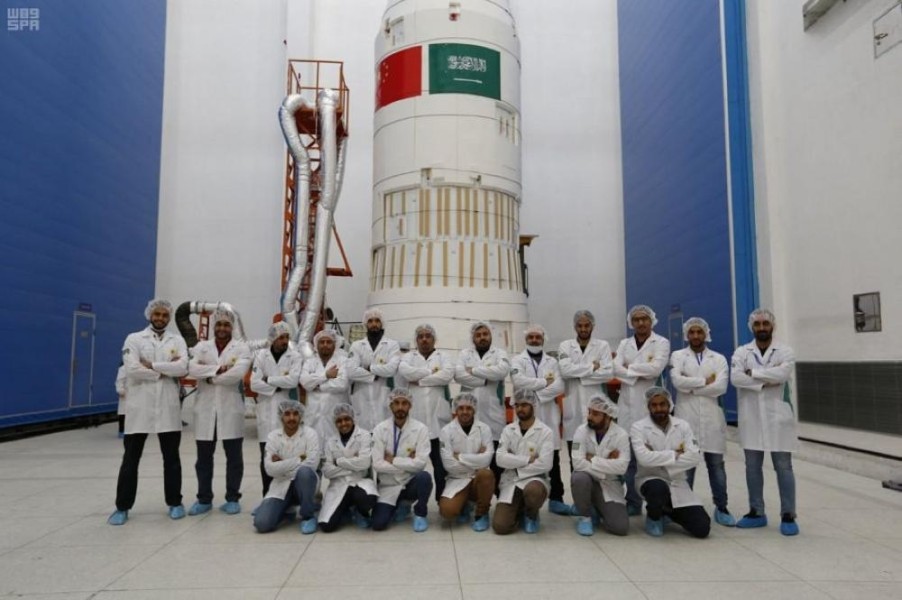
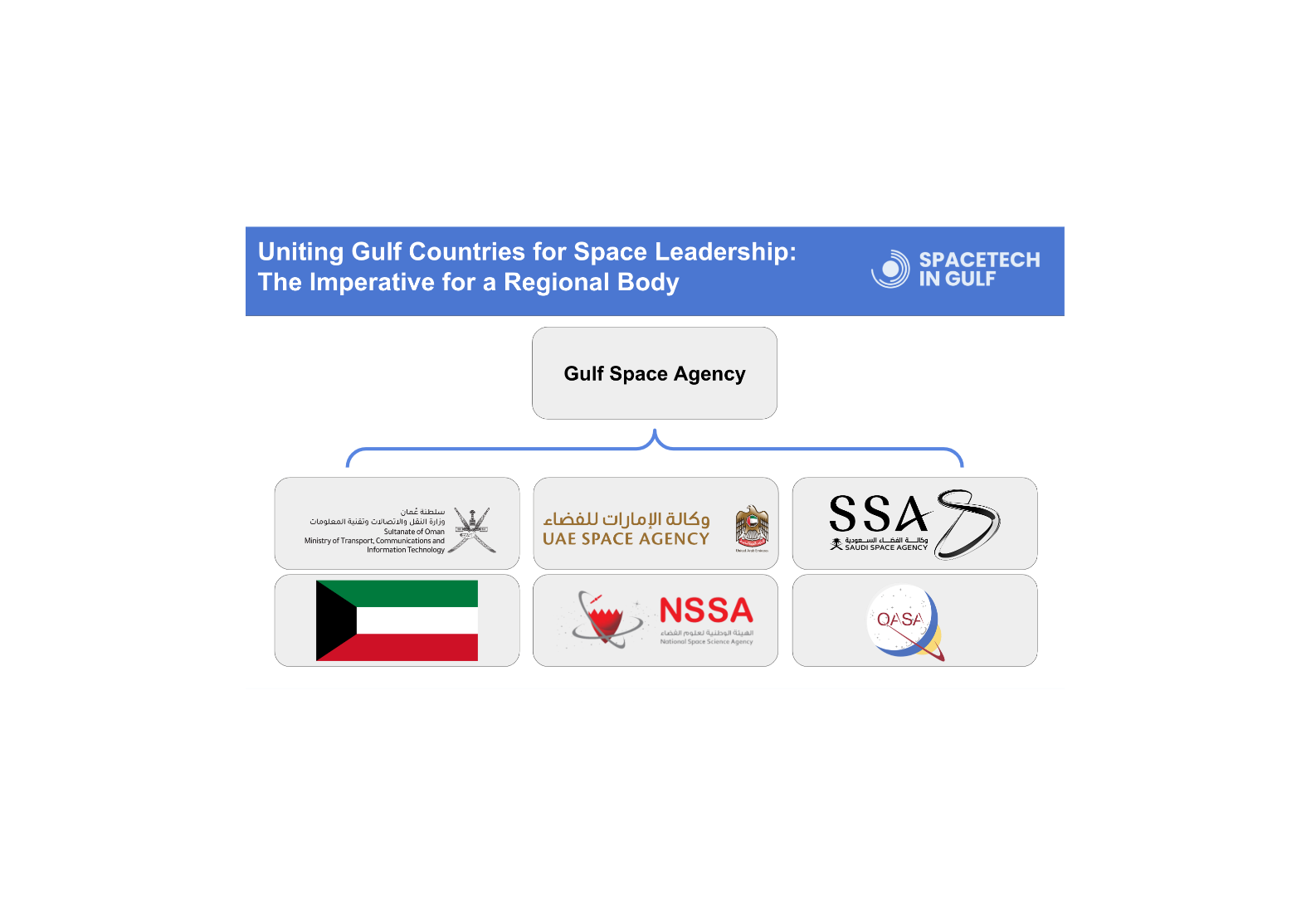

Thank you for your sharing. I am worried that I lack creative ideas. It is your article that makes me full of hope. Thank you. But, I have a question, can you help me?
Ethereum news